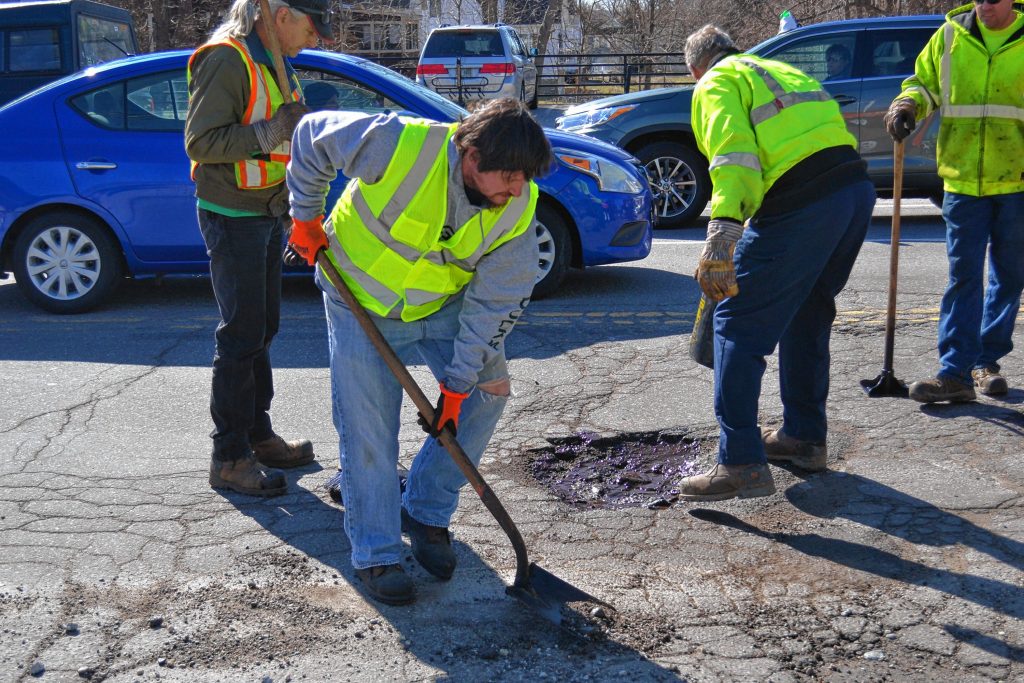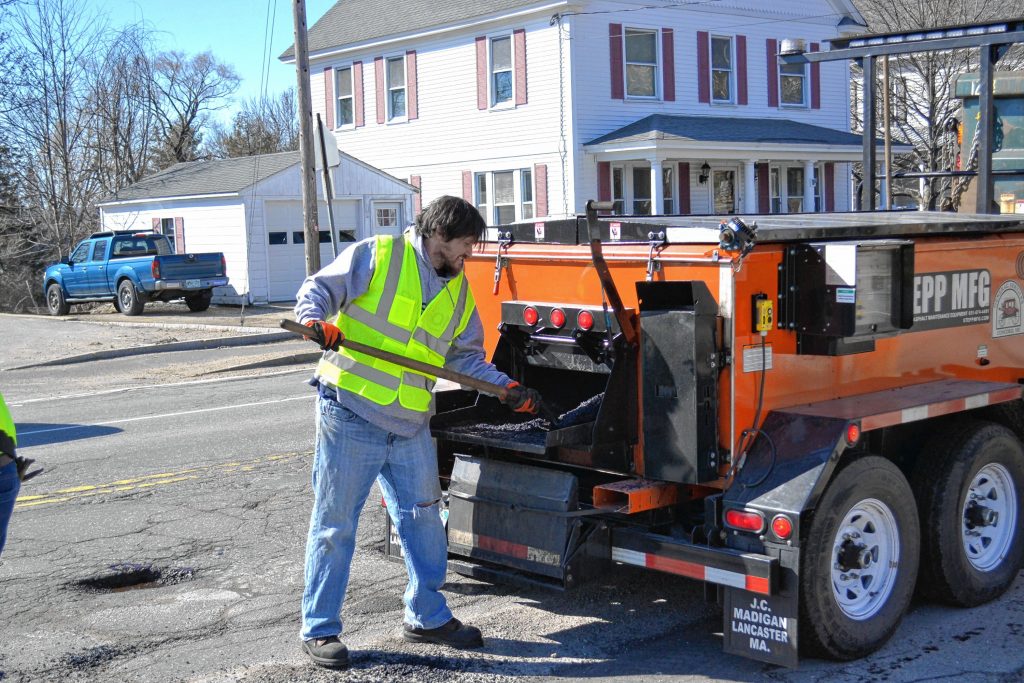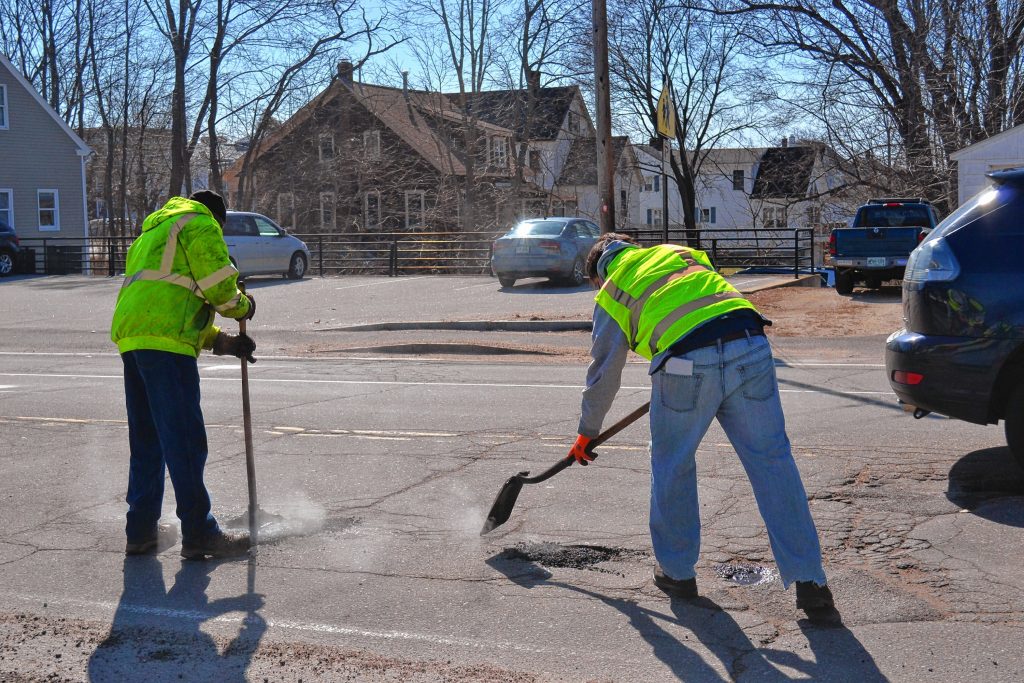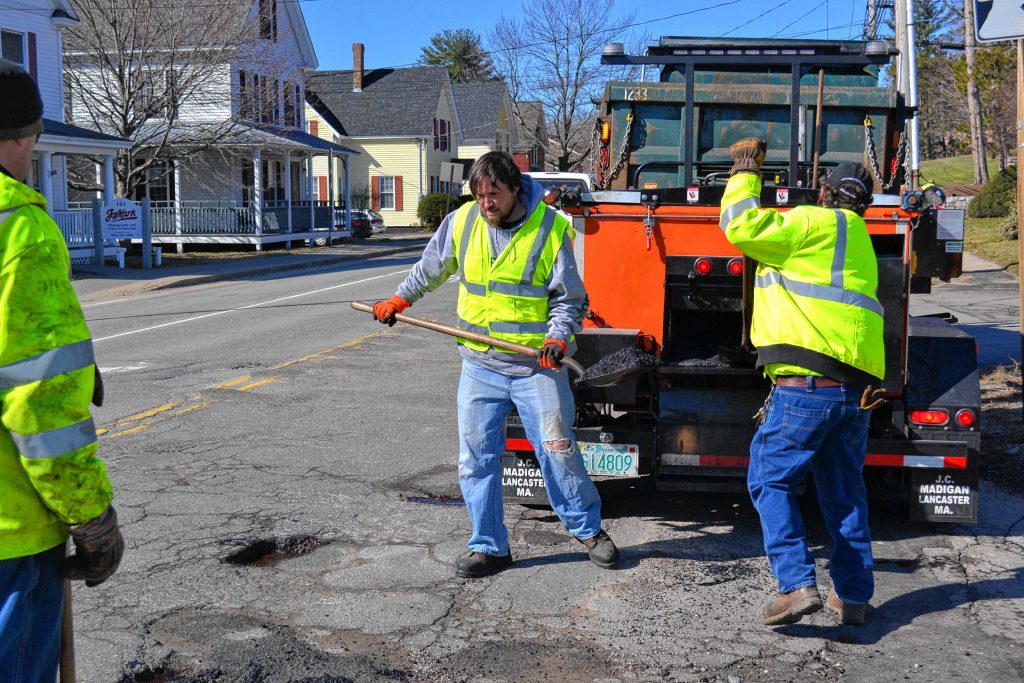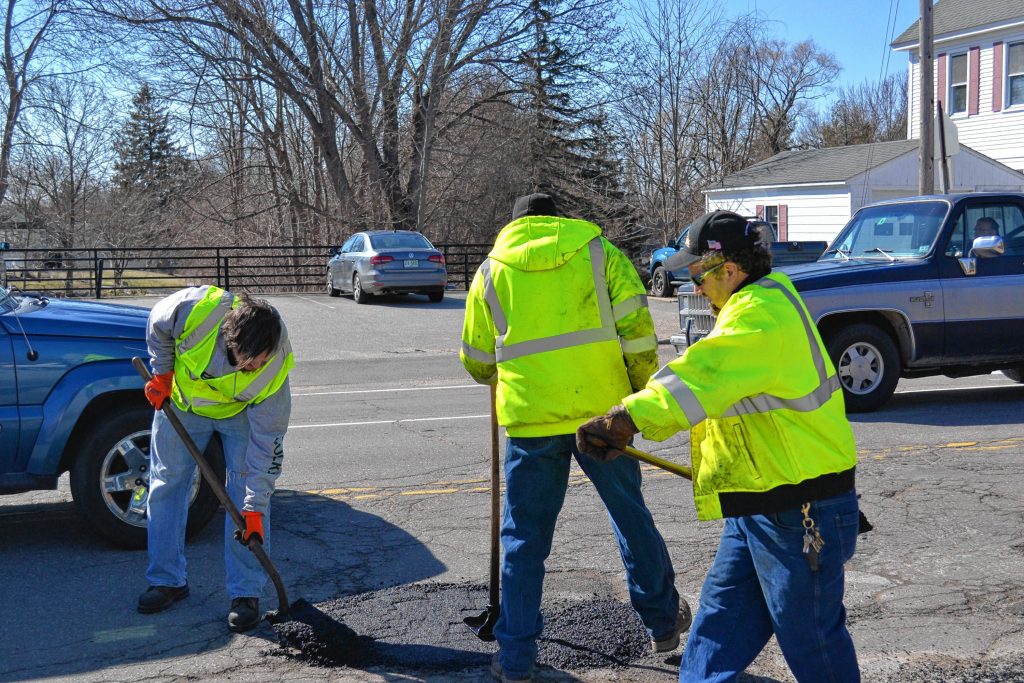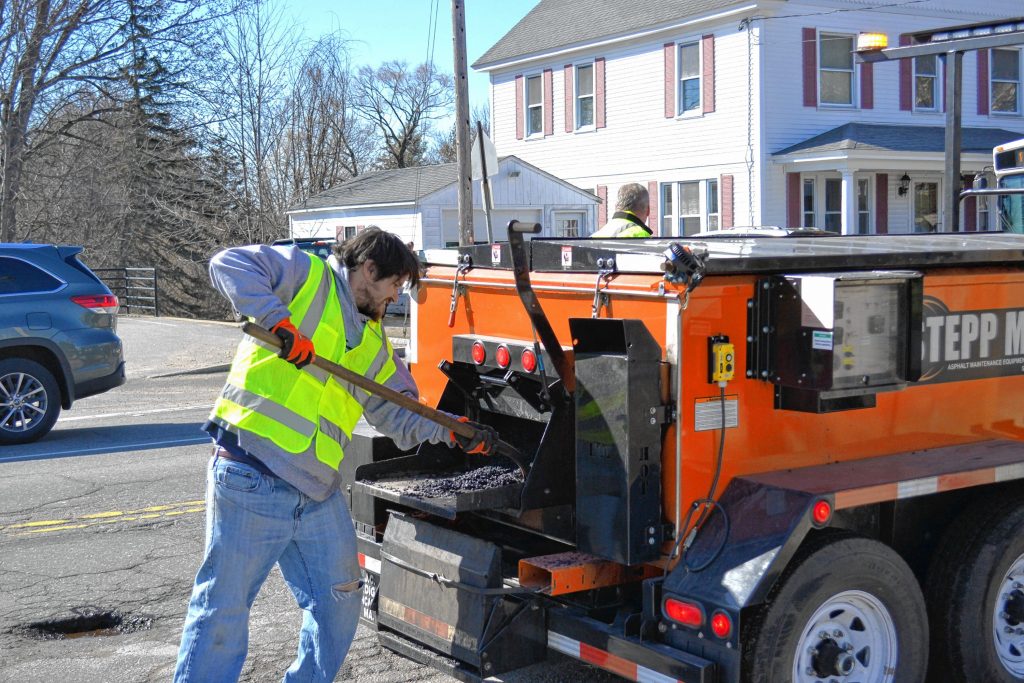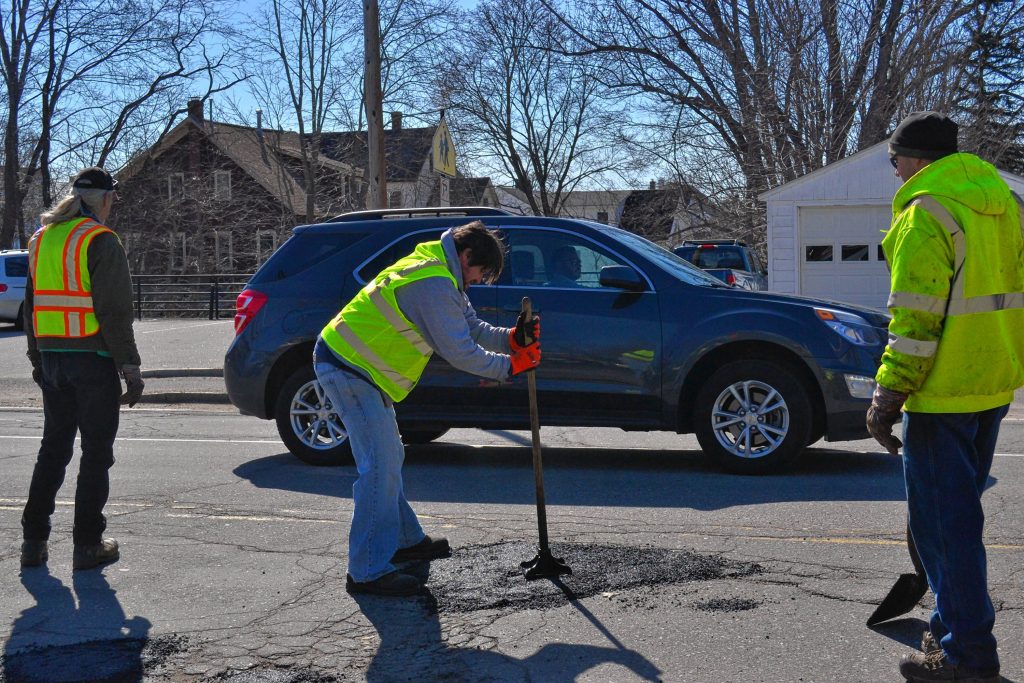The dictionary defines a pothole as “a deep natural underground cavity formed by the erosion of rock, especially by the action of water.” It also lists “a depression or hollow in a road surface caused by wear or subsidence.”
But around these parts they’re more known as an annoyance, a nuisance and an unfortunate part of the early spring freeze/thaw cycle. How can the same process that allows trees to produce sap that is then turned into sweet maple syrup, also be the reason a trip to the store is the potential for a hefty car repair bill.
“It’s the dark side of maple syrup season,” said Concord General Services Director Chip Chesley. “And when the buckets start going away, you’re getting out of pothole season.”
While it’s not as bad as it was a few weeks or a month ago, the potholes are still out there, lurking and waiting.
That is until the Concord General Services crew finds them and fills them. This time of year, there’s one city truck devoted to filling potholes on average once a week – making the roads of Concord that much more smoother to drive on. That’s compared to the three-truck, three days a week schedule it was in February and March.
Last week, I got to tag along with the crew as they embarked on another morning of hot mix, emulsion pouring and avoiding cars. And on this particular morning, the conditions were all over the place. It was a little chilly, I was wearing borrowed steel toed boots and we just so happened to be in a spot that was not only a busy intersection (the one where Pleasant, Warren and Fruit streets meet by those two gas stations near Concord High), but also a construction zone for the water main project.
I got the low-down on the process. First step is to remove any loose debris and then pour a little emulsion in the soon-to-be-filled pothole. The emulsion helps the hot mix (aka the asphalt) bond with the old pavement for what will hopefully be a long term solution.
“You want to stop water from getting in that hole,” Chesley said. “So you have to seal between the old and the new.”
The hot mix was stored in the new hotbox that keeps the asphalt at 280 degrees. Having it hot allows everything to stick together, while the cold patch they use in the winter months is really just a temporary fix. That’s why you might see the same pothole reappear just days after it was filled.
You pile it on using a metal shovel and then flatten it out with a paving tamper. The patch will cool down in about 15 minutes and be a welcome sight to local drivers.
After watching the guys fill a couple, I wanted to get my hands a little dirty – which didn’t even happen because I wore gloves. But I shoveled shovel fulls of hot mix into potholes right around that five-way intersection I mentioned before and even got to flatten out a pretty big one.
While what they’re attempting to fix is in the middle of the road, that doesn’t mean traffic stops around them. Cars are still driving by, sometimes rather close. That’s why someone is always paying attention to traffic, while the other three repair the potholes.
“Filling is easy; the location is probably the most difficult part,” said Jim Major, highways and utilities superintendent.
In all, “we” filled 16 potholes in about 30 minutes – just a blip on the radar when you consider General Services fixes more than 9,000 annually. In addition to Pleasant Street, Hoit Road is the other problem area – a title that used to be owned by Loudon Road before it was paved last summer.
“The ones that are real bad, we keep a note and go back to check,” Major said.
Once it’s paved (which the city is pecking away at) it should create a pothole free environment.
“You hope to get at least 10 to 15 years without potholes,” Major said.
While I didn’t spend much time with the crew, I did gain an appreciation for the process. And a small understanding of how daunting a task it is to fill all those potholes. But that’s where you come in. Thanks to this handy dandy tool on the city’s website, you can actually report a pothole to General Services and the person who will fill it is the one who sees the alert. You’ll even get an email when its been fixed so you can go test it out yourself.
“We want to get it done as soon as possible,” Major said.
Visit concordnh.gov/requesttracker.aspx to report one in your neighborhood or on the drive to work.

